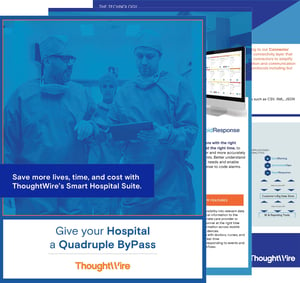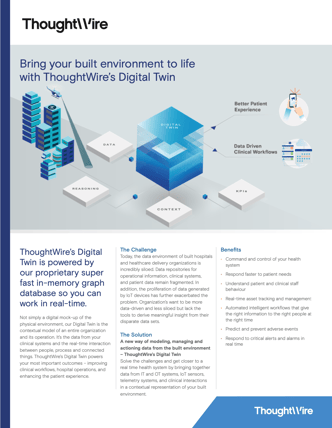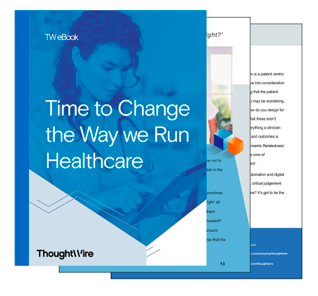Energy consumption by hospitals
Hospitals consumed about 4.5% of Canada’s 842 PetaJoules (PJ) of energy in 2009, despite using approximately 2% of the total commercial real estate floor space. To highlight how significant that is, consider that 1 PJ is sufficient to power almost 20,000 homes. Hospitals require a high intensity of energy by floor space relative to other buildings which are accounted for by the long operating hours of these buildings and the energy demands of the equipment residing in them. While many energy saving measures involve retrofitting buildings with newer pieces of equipment or replacing inefficient lighting and ventilations systems, there are other energy saving strategies that can be less disruptive and more impactful to the working environment.
Energy use can be controlled and the value of energy efficiency is clearly demonstrated with reductions in emissions and operating costs. Hospitals have been able to save hundreds of thousands of dollars through energy saving initiatives. The savings created through energy efficiency have a relatively short payback period and can be used to supplement other hospital budgets, improving the capacity to provide quality care, repair or purchase much needed medical equipment, enhance staffing and improve the patient and employee experience. In a publicly funded system, the opportunity to reallocate resources without necessarily increasing funding should not be wasted.
Energy Savings from “People”- Championing Green Healthcare
Hospital buildings pose unique challenges that require very specific tools or systems to address, due to a 24/7 operation. Staff and patients occupy these spaces constantly and as a result, energy consumption remains high. However, within a hospital, equipment and maintenance systems can be turned off or put into energy saving modes when not in use. For example, lighting, ventilation and patient monitoring systems do not need to be in operation after a patient has been discharged from a room until the time a new patient is admitted to the same space. Employees within an organization can be trained to practice greener energy use behaviors.
For example, having signage or reminders to turn off lights, computers and monitors when leaving work spaces can reduce unnecessary electrical consumption. Hospital kitchens are significant consumers of electricity and natural gases, accounting for an estimated 11% of energy consumption in hospitals. Training staff to turn off kitchen equipment that is not in use, turning off equipment after regular operating hours and minimizing oven preheating times can help limit these hospital energy demands. Allowing staff to adjust the temperature and lighting of spaces according to their comfort and not building settings, could also prove to be very valuable.
Making energy saving a priority could also involve energy saving policies and champions, to clearly communicate the importance of energy saving to the organization. Sustained focus on energy saving can foster a greener culture that lasts beyond short term initiatives.
Energy saving from “Building”
Hospitals need to set thresholds, also known as benchmarking, to which future energy consumption will be measured and to which past performance can be compared. This provides the ability to accurately measure energy consumption and technological opportunities. Benchmarking several separate systems can only be done through monitoring their current state as it is otherwise difficult to pinpoint areas where the greatest opportunities lie. By understanding the various silos within the hospital environment rather than lumping the energy costs into one budget, it becomes easier to understand opportunities for energy efficiency and savings. With these capabilities, insights, and data visualisation, hospitals have greater visibility of their operation.
Lighting improvements, a consistent program of testing and re-balancing HVAC systems and auditing energy use in a hospital environment can be represented with visual data. This can further expand to insights that allow for deliberate actions to implement cost savings plans. An energy audit allows for there to be information on energy savings by a specific project, and potential non-energy improvements- productivity, safety etc. One of the most significant energy innovations in healthcare is combined heat and power (CHP) which captures energy that would normally be lost in power generation and uses it to provide cooling and heating. Knowing when temperatures within a hospital should be regulated, through a Digital Twin dashboard, is actionable information. This can be used to automate subsystems within the hospital environment. Dashboards that are able to present asynchronous information, merging KPIs and real-time stateful information, unlock the capabilities to take immediate action.
ThoughtWire’s Insights dashboard can provide visual representations of real-time energy data, as well as historical data, within buildings. The insights generated can be used to influence behavioural change and adaptation to the current work environment. Notably, although one of the key impacts is cost and energy savings, a comfortable built environment will indirectly impact overall patient care. Giving back energy does much more than save money, it saves lives.
As an organization that serves many industries such as healthcare, commercial real estate, and corporate real estate organizations, we empathize deeply with what our customers are going through at this moment. We’re a technology organization, but for us people have always come first. If you need advice on where to start or how you can make the changes your organization needs to be prepared for the future, get in touch. Community is important now more than ever.






